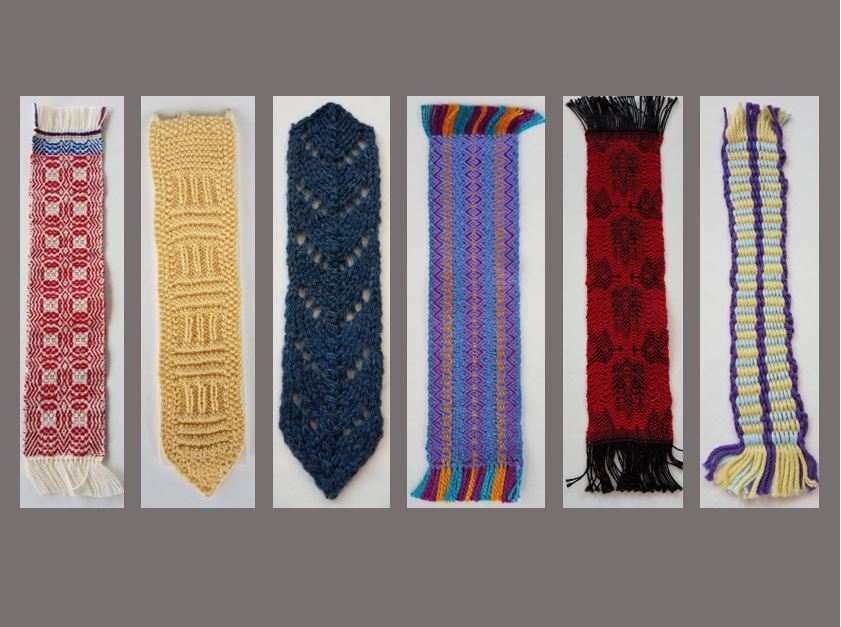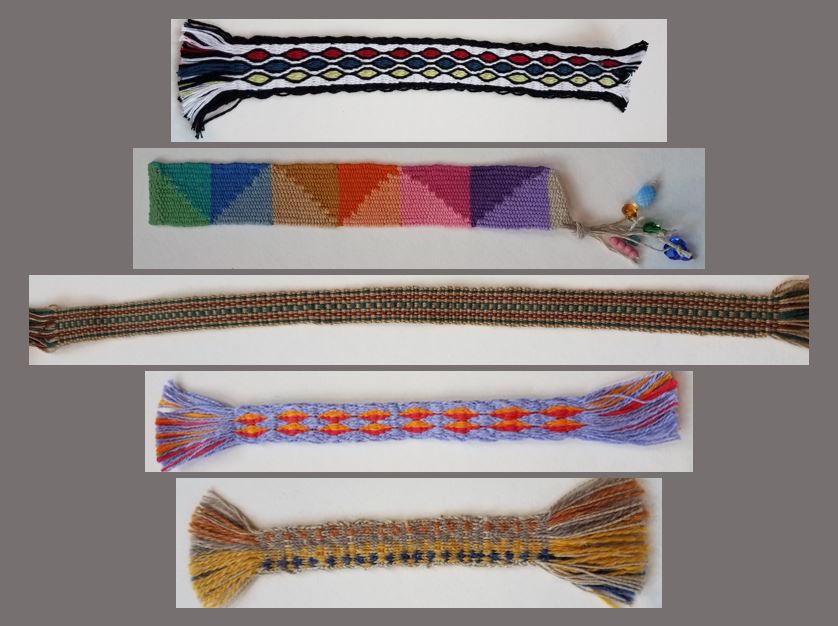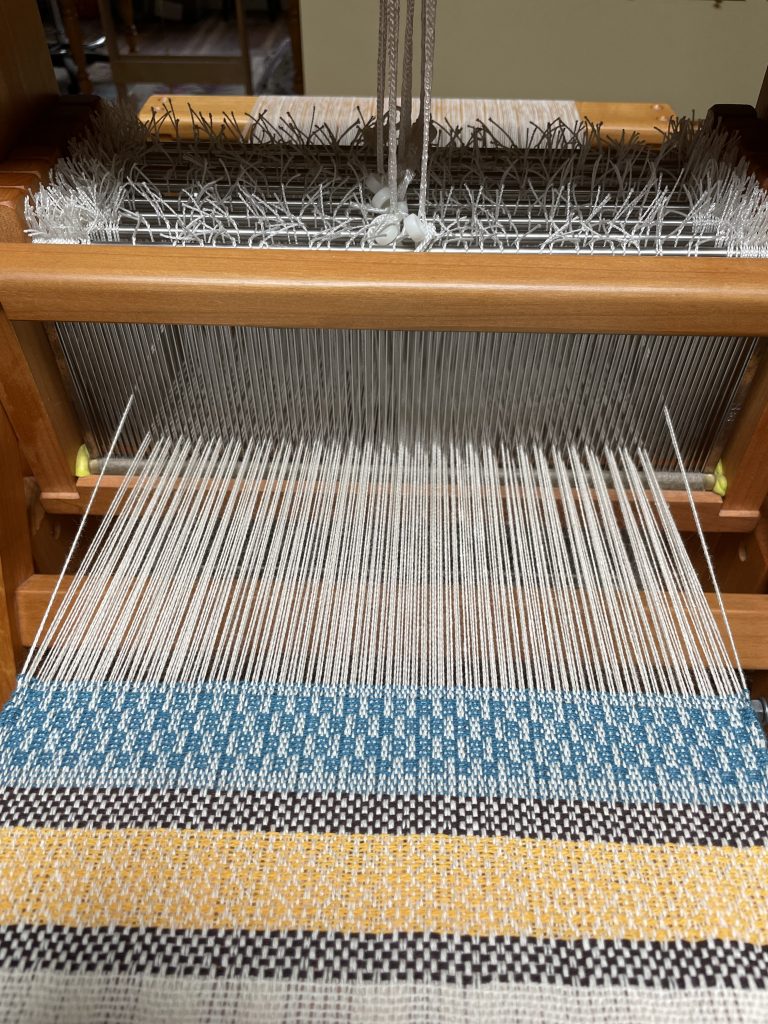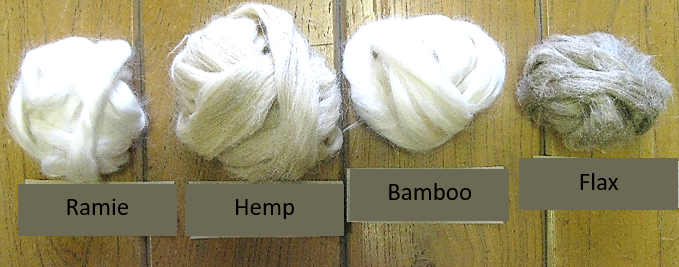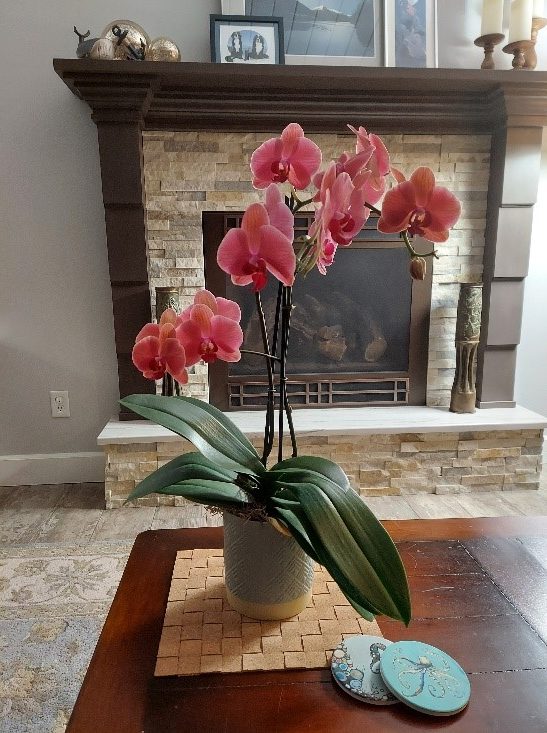All members were invited to use any fiber technique to create a bookmark to exchange at the 2022 Guild picnic. Twenty-two members completed a wonderful array of bookmarks and exchanged them through a random drawing at the June picnic.
Author Archives: Nancy Sedlacek
2021-22 CAMEL Adventure #1
The Creative Approach Mobile Educational Loom (referred to as the CAMEL), provides an opportunity to explore weaving techniques or structures on a pre-warped loom. The loom is passed from house to house of each participant. A table loom is used, making it portable and providing boundless freedom to “lift” shafts individually, allowing the weaver to change patterns (otherwise known as tie-ups and weft picks) on a whim. This year the focus will be on 8 shaft weaving.
CAMEL Adventure #1
The purpose of this first project for the year was to see the almost endless weaving possibilities of a simple Straight 8 threading. This means threading each shaft sequentially (1-2-3-4-5-6-7-8) repeatedly. It’s the easiest 8-shaft threading and a terrific place to start. The participants were then able to try numerous twill patterns, along with canvas and other weave structures that adapt to a Straight 8 threading.
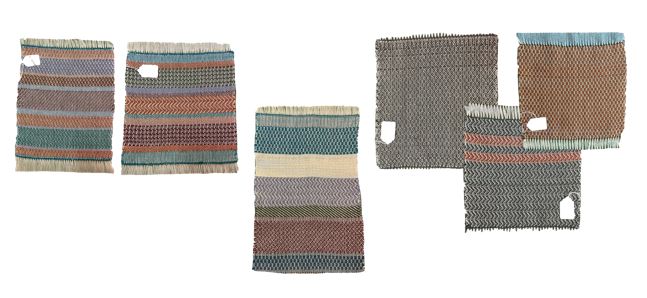
Adventure #2 will feature False Satin, and promises to be just as interesting and fun as the first adventure!
First OWG knit along!
Ten members joined in the first OWG knit along, choosing from two shawl patterns to knit along together. The patterns were both “stash busters”, so knitters could use yarns they already had. Yarns used varied immensely, from all mohair, to cotton, to merino, to sock yarn and in weights from fingering to worsted – sometimes all in the same shawl!
The group met via Zoom over three weeks in March. Terrific, clear demonstrations of unfamiliar pattern stitches were given by the group’s leader. It was inspiring to see the yarn choices and progress of each knitter as the weeks went by. Some members really “went rogue” on the patterns!
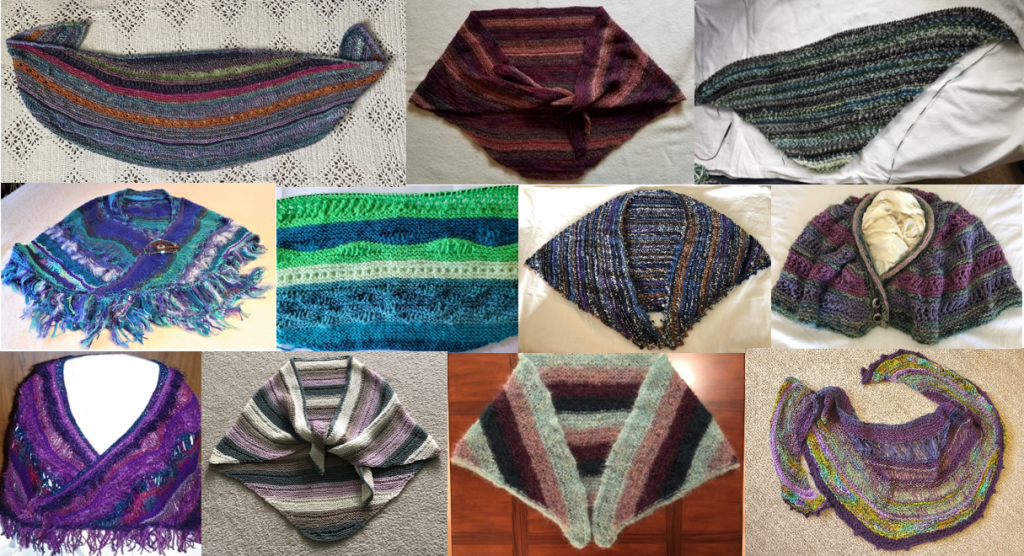
The shawl Patterns, “All Colors Work” and “Rogue Wave”, are both free on Ravelry online.
Creativity Jumpstart 6: Spinning bast fibers
Spinners were able to learn the characteristics of four bast fibers first hand by spinning a representative selection of four different fibers. (Bast fibers are produced from the stem of plants and as you might guess, tend to be long, stiff and strong – just like the stem.) All kits included flax, hemp and bast bamboo, plus one of ramie, banana, pineapple or Himalayan nettle.
Creativity Jumpstart 5: Weaving coasters of cork
Using thin sheets of pressed cork, participants in this Jumpstart wove coasters or mats of various sizes. Each person received plain, 6″ X 12″ sheets of cork, cut them to a size that worked for their personal design, then wove and glued these strips to create coasters or larger mats. As you can see, one doesn’t have to stop at just the weaving! Vinyl cutouts, ribbon and even printing on the cork using a printer were used to enhance the cork.

Inspiring HGA “Exhibits”
If you could use a little inspiration in these last days of winter, Handweavers Guild of America (HGA) has put three online for you to view free any time. These were originally meant to be part of this past year’s Convergence conference. Find all three here:
https://www.facebook.com/pg/HandweaversGuildofAmerica/photos/
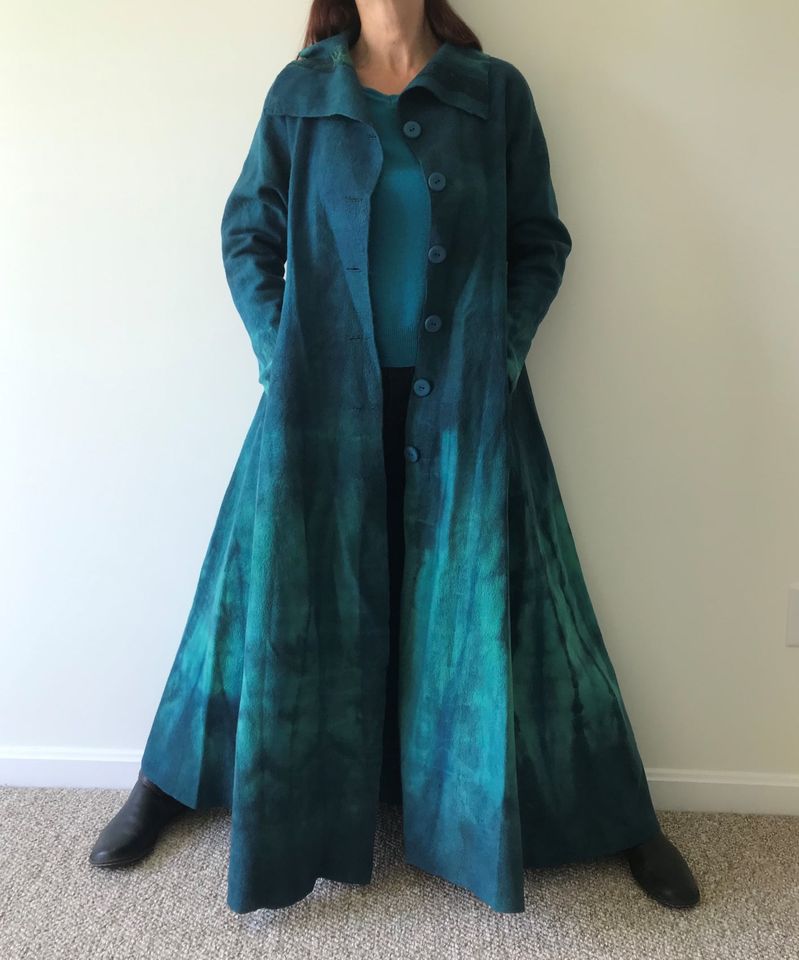
Seasons of the Smokies is a wearable art exhibit juried by fiber artist Dianne Totten. Fiber artists were challenged to design and create clothing that is both functional and artistic. Any fiber arts technique was permitted to be used.
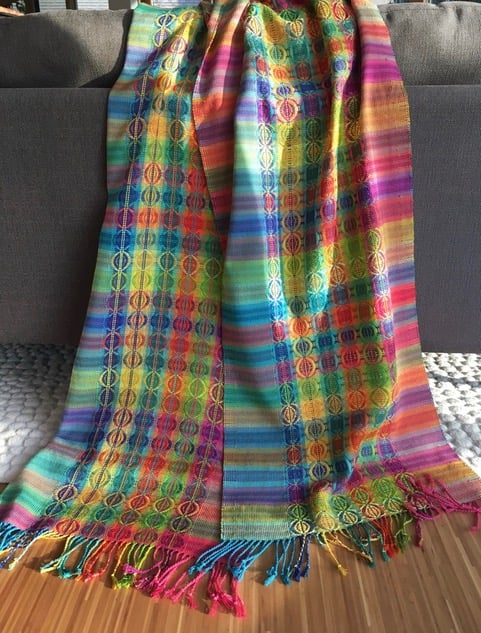
Vistas Along the Appalachian Trail is a yardage exhibit juried by author and fiber artist Robyn Spady. This exhibit showcases lengths of woven, constructed and/or embellished cloth using any fiber arts technique.
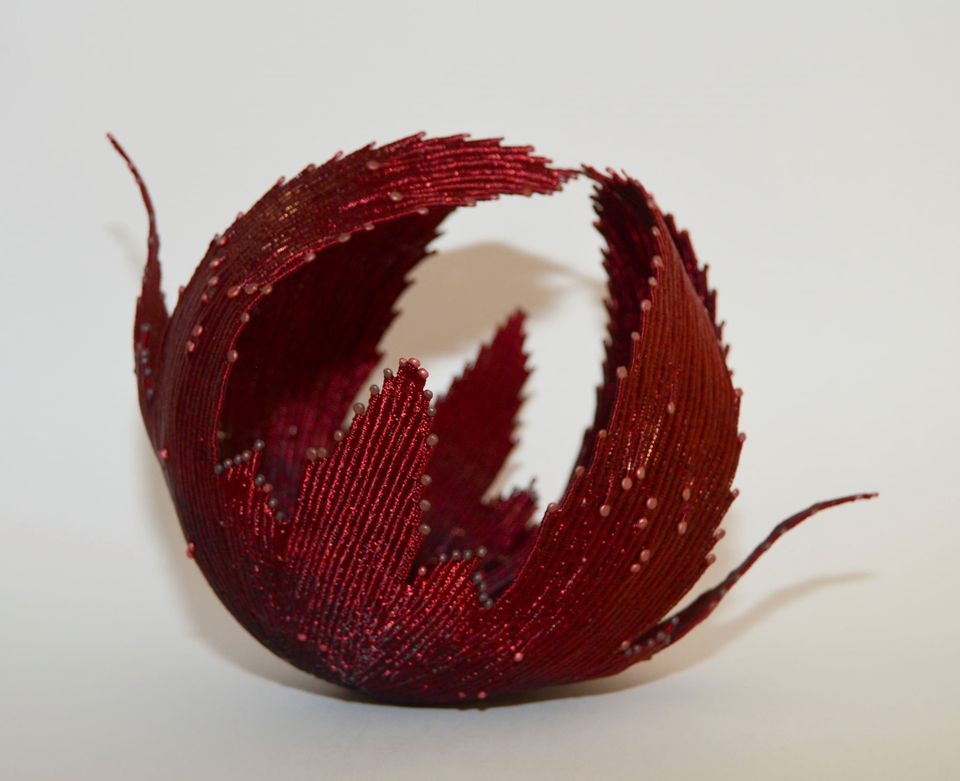
Symphony of the Mountains is a mixed media exhibit juried by author Kathleen Curtis Wilson. Fiber artists were encouraged to explore changes in environment, harmony with nature and the rhythm of natural cycles to celebrate the Smoky Mountains in producing high quality, contemporary works using any fiber material.
Free Videos about Fiber Crafts
If you have a bit of free time and could use a little inspiration, the following sites host free videos about fiber crafts. Two are from Handweaver’s Guild of America (HGA) and they each host different videos. All are informative and contain terrific inspiration, as well. Enjoy!
HGA’s Facebook page of videos: https://www.facebook.com/HandweaversGuildofAmerica/videos/1060059934479665/

HGA’s YouTube Channel: https://www.youtube.com/user/hgaweavespindye

Maiwa’s School of Textiles free “courses”: https://maiwa.teachable.com/courses

Botanical Colors’ videos from weekly presentations: https://botanicalcolors.com/tag/feedback-friday/

Creativity Jumpstart 4: Fiber Created Cards
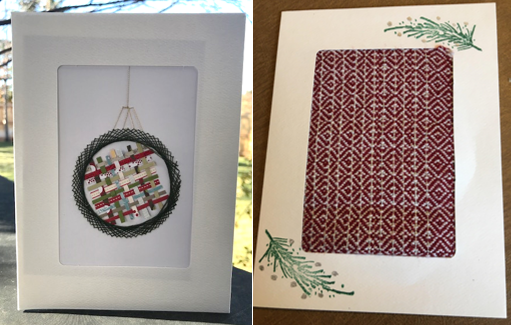
Using pieces of existing weaving or creating a small, new fiber art piece, participants in this Creativity Jumpstart created two unique greeting cards. Two blank greeting cards with cutout windows and insert backings were provided and the cards that resulted are fabulous!

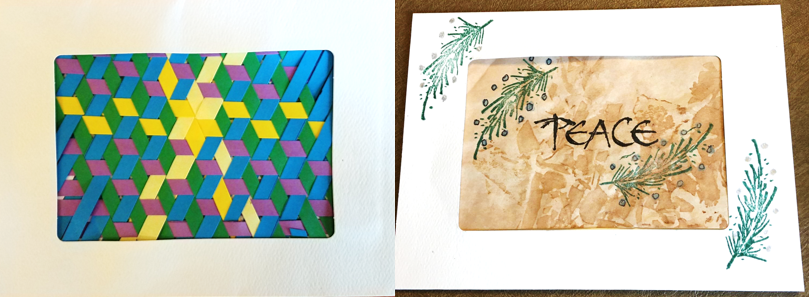
Creativity Jumpstart 3: Woven Napkin Rings
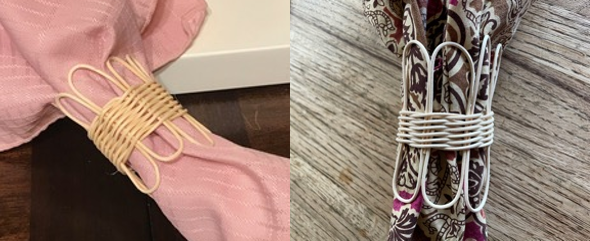
Participants in the third Creativity Jumpstart used #3 round reed – and other reed – to weave napkin rings. As you can see, evena simple napkin ring pattern can be varied endlessly!

Creativity Jumpstart 2: Dye Fabric and Yarn with Rust!
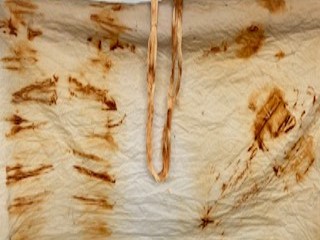
Rust dyeing produces rich, warm colors and unexpected patterns on fabric and yarn. It is simple, easy and requires no special equipment. Participants in this Jumpstart dyed both cotton fabric and cotton yarn using the following procedure.
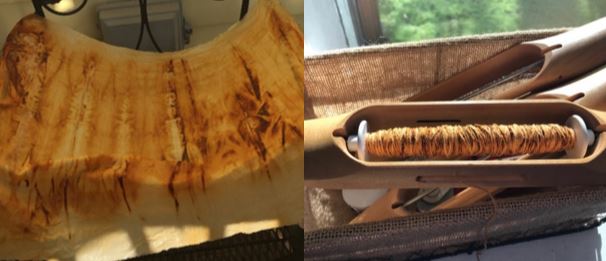
Soak fabric and yarn in vinegar (no water) until thoroughly wet. Wrap fabric and yarn around a rusty object or objects, pressing the fabric against the rusty surface. You will see a stronger color where the fabric and yarn touch the object, so use a large enough object that the fabric and yarn can touch the object often or use several small objects like nails. Don’t worry about wrinkles or folds in the fabric as these add to the patterning possibilities. In fact, you can scrunch your fabric just a bit on purpose! Wrap all this tightly in plastic wrap or a plastic bag and let cure from 24 hours to several days. The longer it cures, the deeper the color.

Unwrap the plastic wrap and unwrap the fabric and yarn. Do not rinse yet! Instead, soak the fabric and yarn in salty water to stop the rusting process. Use 1 tablespoon salt in 1 gallon of water. Rinse the fabric and yarn thoroughly, then wash in a mild detergent and dry.

